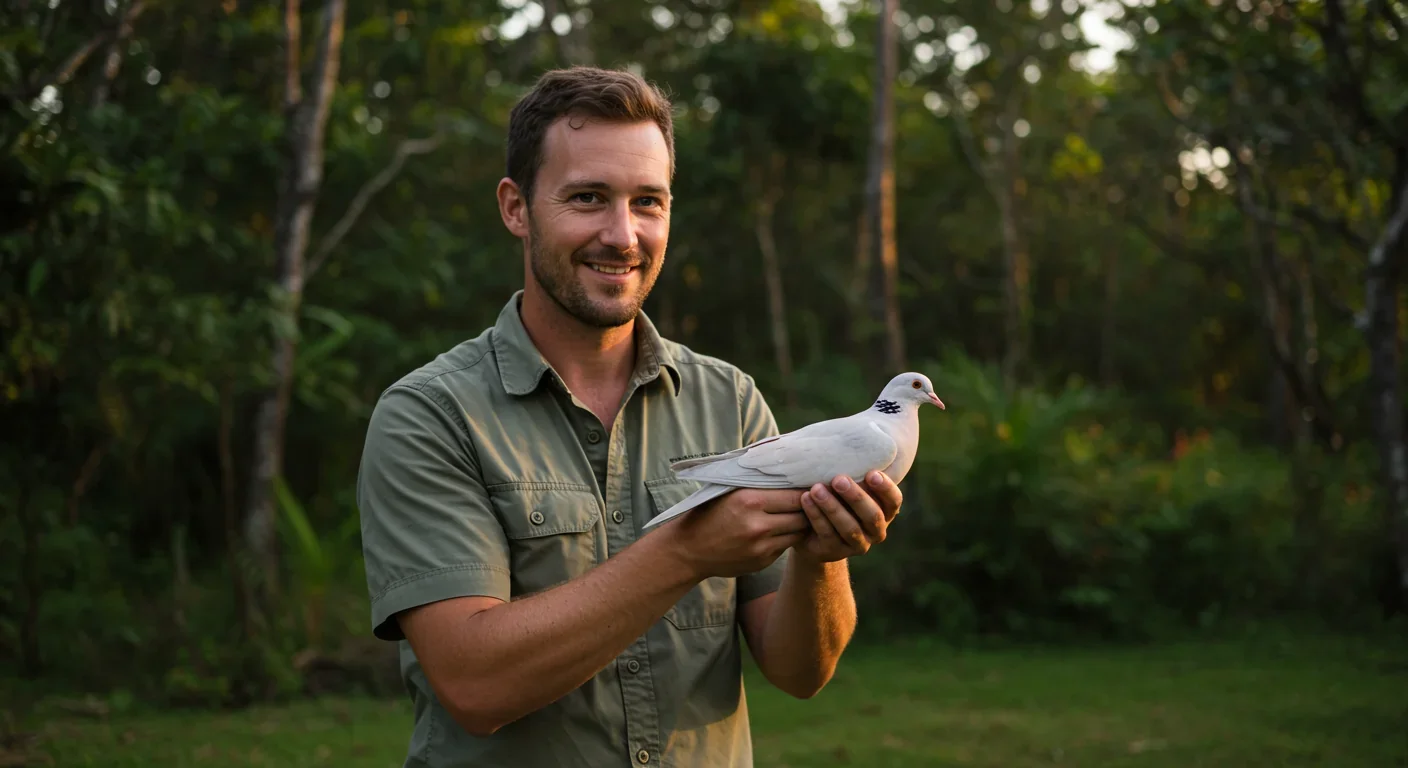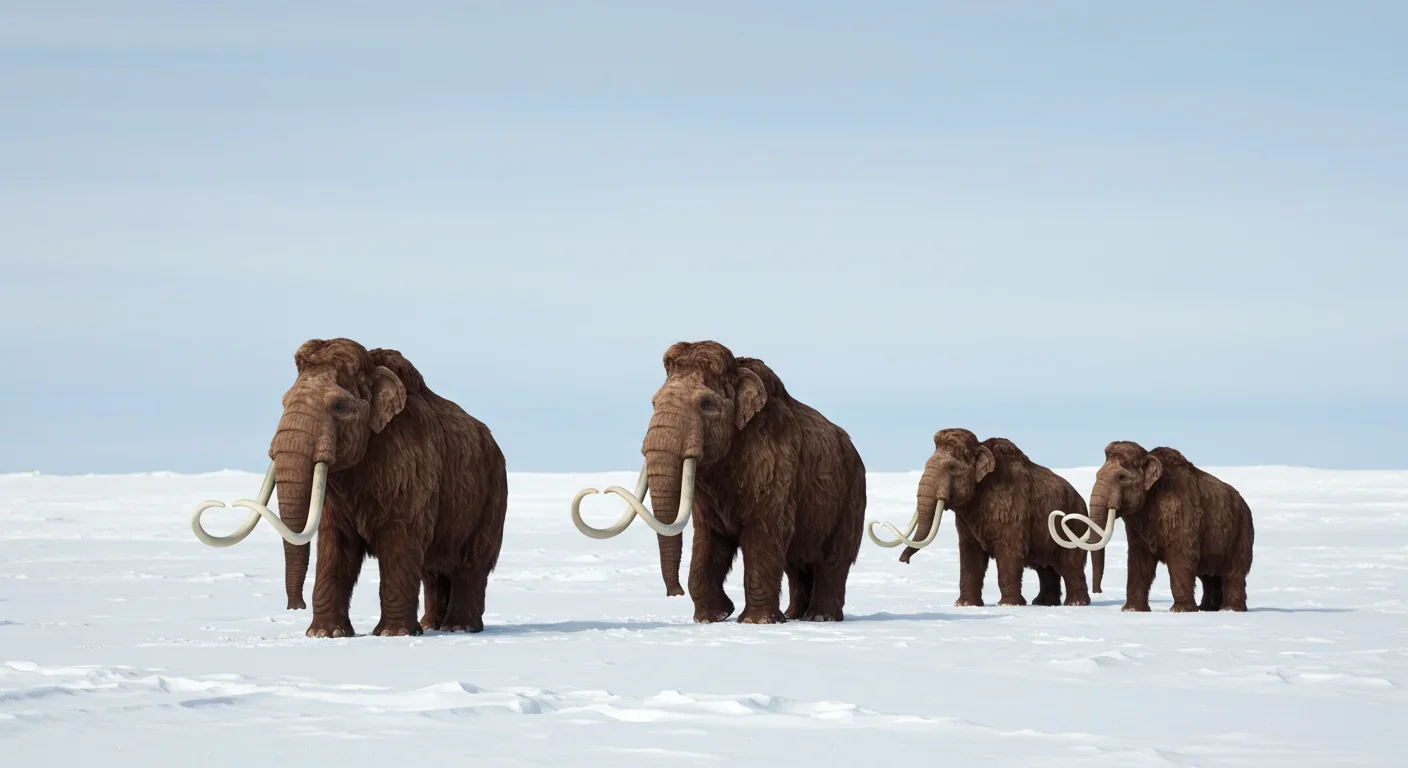Bombardier Beetle Chemical Defense: Nature's Micro Engine

TL;DR: Scientists are racing to resurrect extinct species using CRISPR gene editing, with the first woolly mammoth calf expected by 2028. While de-extinction offers conservation breakthroughs, it raises critical questions about ecology, ethics, and whether we should resurrect what we destroyed.

By 2028, scientists expect to birth the first woolly mammoth calf in over 4,000 years. Not a fossil, not a museum exhibit—a living, breathing creature walking the tundra where its ancestors once roamed. And it won't be alone. From dodos to dire wolves, researchers are racing to resurrect species we thought were gone forever. This isn't science fiction. It's happening now, funded by billions in venture capital and powered by gene-editing tools that didn't exist a decade ago. The question isn't whether we can bring back extinct species anymore. It's whether we should.
Think of de-extinction as biological archaeology with a twist. Instead of just digging up bones, scientists are rebuilding entire organisms from scratch. The process starts with ancient DNA, though calling it "DNA" is generous—after thousands of years buried in permafrost or amber, genetic material fragments into millions of pieces. Researchers must sequence these fragments, identify which genes control which traits, and then edit those traits into the genome of the closest living relative.
Enter CRISPR, the gene-editing Swiss Army knife that's revolutionizing biology. The process requires sequencing both the extinct animal's genome and finding a close living relative to serve as the genetic foundation. For woolly mammoths, that's Asian elephants. For dodos, it's Nicobar pigeons. Scientists then use CRISPR like molecular scissors, snipping out modern genes and pasting in extinct versions—subcutaneous fat for Arctic survival, distinctive feather patterns, even behavioral traits encoded in DNA.
Colossal Biosciences, the company leading the charge, just announced a breakthrough in growing pigeon primordial germ cells—the precursor to sperm and eggs. Their plan? Inject these edited cells into chicken surrogates that will lay eggs containing dodo chicks. CEO Ben Lamm says they're "not looking to make two dodos, we're looking to make thousands," with wild release planned within five to seven years.
But here's the catch: what emerges won't be a perfect replica. Ancient DNA is too fragmentary, and CRISPR creates hybrid animals that blend extinct and modern traits. The mammoth calf born in 2028 will technically be an Asian elephant with mammoth characteristics—a living approximation, not a clone. Some scientists call this "de-extinction theater" rather than true resurrection.
Cloning offers another path, but only for recently extinct species where intact cells survive. The gastric-brooding frog project in Australia has successfully created embryos from frozen tissue, though none have survived to adulthood yet. For species dead longer than a few decades, cloning simply doesn't work—you need living cells, and death destroys them too thoroughly.
Bringing back a species in a lab is one thing. Making it thrive in nature is another beast entirely. Woolly mammoths evolved over millions of years to survive in specific ecosystems that no longer exist. The tundra they knew featured different plant species, different predators, and different climate patterns than today's rapidly warming Arctic. Proponents argue these de-extincted mammoths would combat climate change by trampling dead grass, exposing spring grass whose deep roots prevent erosion and keep permafrost frozen.
But critics like Oxford biologist Rich Grenyer call this a "dangerous distraction." The numbers required—thousands of healthy animals—and the decades needed for herds to establish themselves make the climate benefits theoretical at best. Meanwhile, we're losing 150 species daily to habitat destruction and climate change. Every dollar spent resurrecting the dodo is a dollar not protecting species we can still save.
The ecological roulette extends beyond climate. Dodos went extinct in 1681, and Mauritius has completely transformed since then. The trees they dispersed seeds for have adapted or disappeared. The predators that kept their population in check are gone, replaced by invasive species. Releasing thousands of gene-edited dodos into this altered ecosystem could trigger cascading effects scientists can't predict. Will they outcompete native birds? Spread diseases? Collapse without their original food sources?
Consider the dire wolf, another candidate for de-extinction. Research suggests these iconic Ice Age predators were genetically distinct from modern wolves and evolved different hunting strategies for megafauna that no longer exist. What happens when you introduce an apex predator designed for extinct prey into modern ecosystems? Nobody knows, because we've never done it.

The moral landscape gets thornier the deeper you go. Start with animal welfare: those gene-edited elephant-mammoth hybrids will be born to surrogate mothers who've never seen their "species" before. Welfare concerns about these creatures are legitimate and deserve full transparency. Will Asian elephants know how to raise mammoth calves? Will chickens nurture dodo chicks properly? Early experiments will inevitably involve suffering, failed embryos, and animals that don't survive.
Then there's the question of purpose. We're not resurrecting passenger pigeons because we miss their beauty—though that's part of it. Companies like Colossal pitch de-extinction as conservation, but celebrity investors like Tom Brady, Paris Hilton, and Tiger Woods aren't funding this science for purely altruistic reasons. Colossal just raised $120 million and boasts a $10.2 billion valuation. The patents, technologies, and media attention flowing from these projects represent enormous commercial value.
This commercialization raises uncomfortable questions. Who owns a de-extincted species? Can companies patent mammoth genomes or trademark dodo genetics? The ethical implications become even more fraught when you consider that some researchers have suggested de-extincting extinct human ancestors. Neanderthals shared 99.7% of our DNA. Technically, with enough genome data and a willing surrogate, CRISPR could bring them back. Should it?
Most scientists say absolutely not, but there's currently no comprehensive international legal framework specifically addressing de-extinction activities. Private companies could, theoretically, pursue projects in countries with lax regulations. The absence of governance creates a vacuum where ethics lag behind capability.
Yet for all these concerns, de-extinction research is driving genuine conservation breakthroughs. The technologies developed for mammoth revival—advanced reproductive techniques, genetic rescue methods, artificial wombs—are already helping critically endangered species like black-footed ferrets and northern white rhinos. When you're trying to save the last few dozen members of a species, techniques for generating genetic diversity and breeding animals in labs become essential tools.
Ancient DNA analysis has also accelerated dramatically. What once took years now takes months, thanks to algorithms and sequencing methods refined for de-extinction. We can trace human migration patterns, understand how diseases evolved, and map lost ecosystems with unprecedented detail. A 4,500-year-old Egyptian genome recently revealed migration patterns that reshaped our understanding of ancient civilizations—insights that wouldn't exist without de-extinction technology.
Some researchers argue we have a moral obligation to resurrect species humans drove to extinction. We hunted the dodo to death, destroyed the passenger pigeon through habitat loss, and pushed the Tasmanian tiger to its final breath in a zoo. If we caused the extinction, don't we owe it to these species to bring them back if we can?
The counterargument: bringing back a handful of individuals doesn't undo the harm. It's a symbolic gesture that makes us feel better while the biodiversity crisis accelerates. Every extinction represents millions of years of evolution lost, intricate ecological relationships severed, and genetic information erased. Creating a mammoth-like elephant doesn't restore those evolutionary pathways or ecosystem functions. It creates something new, something we've never seen before.
The debate plays out differently across cultures and continents. In Australia, the gastric-brooding frog project carries deep cultural significance because these unique amphibians were discovered and lost within a single human generation. Australians see de-extinction as righting a recent wrong, making it more immediate and personal than mammoths lost to the Ice Age.
European regulators tend toward caution, emphasizing precautionary principles and ethical review boards before any release. Asia, particularly China, is investing heavily in the technology with fewer public debates about whether to proceed. The geopolitical implications are significant: whoever masters de-extinction first gains enormous soft power, technological prestige, and potential economic advantages from patents and tourism.
Indigenous communities often get left out of these conversations entirely, despite having managed ecosystems for thousands of years. When scientists propose releasing mammoths in Siberia or Arctic Canada, do the people who live there get a say? What about sacred sites or traditional hunting grounds? The Western-dominated narrative of de-extinction rarely includes these voices, yet they'll be most affected by the outcome.
Meanwhile, public perception swings wildly between Jurassic Park fantasies and ethical horror. Surveys show people generally support de-extinction for recently extinct species we drove to oblivion, but get squeamish about deeper prehistory or anything involving human ancestors. The line keeps moving as the technology advances and society grapples with what's possible versus what's wise.

Like it or not, de-extinction is coming. The first mammoth calf will be born, and society will confront the reality of extinct species walking among us again. The question isn't whether to stop it—the technology is already too distributed, the investment too substantial, the momentum too strong. The question is how we manage it responsibly.
That starts with robust international governance specifically addressing de-extinction. We need frameworks that answer: Which species should be candidates? What ecological assessments are required before release? Who decides if the risks outweigh the benefits? How do we ensure animal welfare throughout the process? What happens if something goes catastrophically wrong?
It also requires honesty about trade-offs. Every research dollar has an opportunity cost. Every scientist working on mammoths could be protecting elephants. Every headline about dodo resurrection draws attention from the extinction crisis unfolding in real time. We need clear metrics for success and the intellectual humility to admit when de-extinction isn't the right tool for the job.
Perhaps most importantly, we need to expand the conversation beyond scientists and billionaire investors. Indigenous communities, ethicists, ecologists, local communities, and the public deserve meaningful input into decisions that will reshape ecosystems and rewrite our relationship with nature. Democracy doesn't stop at the laboratory door.
The technology will advance whether we're ready or not. CRISPR gets more precise, artificial wombs more sophisticated, and DNA sequencing cheaper each year. Within a decade, de-extinction might be accessible to well-funded universities worldwide, not just billion-dollar companies. The question we face isn't about scientific capability—it's about collective wisdom.
Can we resurrect extinct species responsibly, learning from our past mistakes rather than compounding them? Can we direct this powerful technology toward conservation rather than commercialization? Can we make decisions that honor both the species we lost and the ones still clinging to survival?
The mammoths are coming back. What we do next will determine whether that's humanity's redemption or another chapter in our troubled history with nature. The past is being rewritten. The future is watching.

Recent breakthroughs in fusion technology—including 351,000-gauss magnetic fields, AI-driven plasma diagnostics, and net energy gain at the National Ignition Facility—are transforming fusion propulsion from science fiction to engineering frontier. Scientists now have a realistic pathway to accelerate spacecraft to 10% of light speed, enabling a 43-year journey to Alpha Centauri. While challenges remain in miniaturization, neutron management, and sustained operation, the physics barriers have ...

Epigenetic clocks measure DNA methylation patterns to calculate biological age, which predicts disease risk up to 30 years before symptoms appear. Landmark studies show that accelerated epigenetic aging forecasts cardiovascular disease, diabetes, and neurodegeneration with remarkable accuracy. Lifestyle interventions—Mediterranean diet, structured exercise, quality sleep, stress management—can measurably reverse biological aging, reducing epigenetic age by 1-2 years within months. Commercial ...

Data centers consumed 415 terawatt-hours of electricity in 2024 and will nearly double that by 2030, driven by AI's insatiable energy appetite. Despite tech giants' renewable pledges, actual emissions are up to 662% higher than reported due to accounting loopholes. A digital pollution tax—similar to Europe's carbon border tariff—could finally force the industry to invest in efficiency technologies like liquid cooling, waste heat recovery, and time-matched renewable power, transforming volunta...

Humans are hardwired to see invisible agents—gods, ghosts, conspiracies—thanks to the Hyperactive Agency Detection Device (HADD), an evolutionary survival mechanism that favored false alarms over fatal misses. This cognitive bias, rooted in brain regions like the temporoparietal junction and medial prefrontal cortex, generates religious beliefs, animistic worldviews, and conspiracy theories across all cultures. Understanding HADD doesn't eliminate belief, but it helps us recognize when our pa...

The bombardier beetle has perfected a chemical defense system that human engineers are still trying to replicate: a two-chamber micro-combustion engine that mixes hydroquinone and hydrogen peroxide to create explosive 100°C sprays at up to 500 pulses per second, aimed with 270-degree precision. This tiny insect's biochemical marvel is inspiring revolutionary technologies in aerospace propulsion, pharmaceutical delivery, and fire suppression. By 2030, beetle-inspired systems could position sat...

The U.S. faces a catastrophic care worker shortage driven by poverty-level wages, overwhelming burnout, and systemic undervaluation. With 99% of nursing homes hiring and 9.7 million openings projected by 2034, the crisis threatens patient safety, family stability, and economic productivity. Evidence-based solutions—wage reforms, streamlined training, technology integration, and policy enforcement—exist and work, but require sustained political will and cultural recognition that caregiving is ...

Every major AI model was trained on copyrighted text scraped without permission, triggering billion-dollar lawsuits and forcing a reckoning between innovation and creator rights. The future depends on finding balance between transformative AI development and fair compensation for the people whose work fuels it.